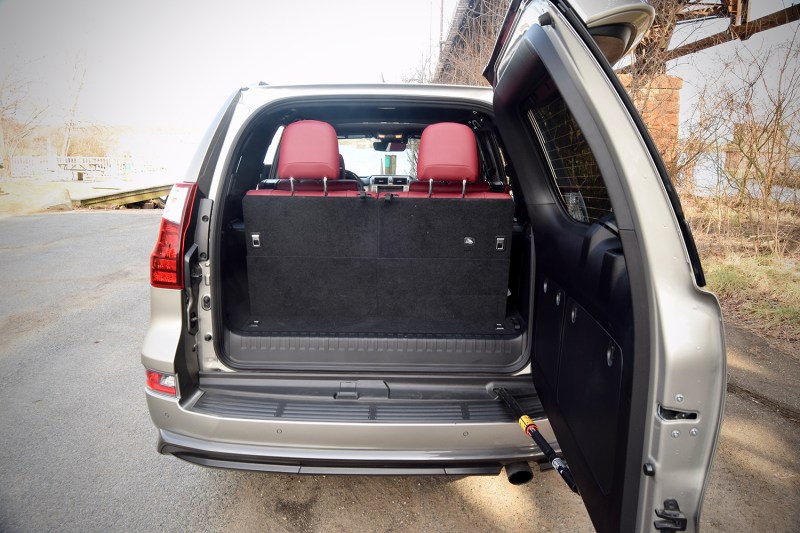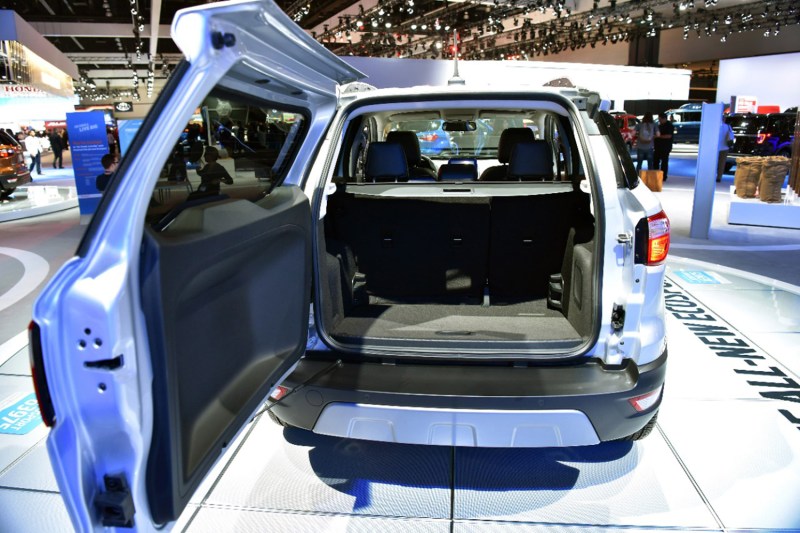We recently had the chance to sample the 2020 Lexus GX 460, a fantastic SUV for those that know exactly what they want, but a thorough dinosaur nonetheless. While some may think that the SUV’s naturally aspirated V8 engine or lack of a modern infotainment system may be the items that allow us to carbon date the machine, it’s actually something entirely different. Move your way to the rear of the SUV, and you’ll find a swing-out tailgate. That, without a doubt, is the oldest element on the SUV. Lexus isn’t alone in offering SUVs with this peculiar design and it’s got to stop.

It’s difficult to say what automaker was the first to introduce the swing-out tailgate or what vehicle wore it first, but the design was found on some of the most hardcore off-roaders available. The legendary Mercedes-Benz G-Wagon sported one, as did some original Land Rover Defenders and Toyota FJ40 Land Cruisers.
While I wasn’t there when the engineers and designers of these respective vehicles decided that having a swing-out tailgate was the right thing to do, there were some advantages. For one, it allowed these SUVs to be able to carry a full-size spare in an easily accessible area – a necessity if you’re somewhere out in the wilderness and need to get moving as soon as possible after a flat. Compared to tailgates from the same period, which mimic modern tailgates on pickup trucks that swing down, they allowed easier access to the entirety of the cargo area. Lastly, these swing-out tailgates were simply designed. On FJ40s, for example, you only needed to remove a couple of bolts to take the entire tailgate off. I can only imagine that this was done to make it easier to replace them if damage occurred or if you simply wanted a more spacious cabin to trek through the wilderness with.

Over time, quite a few SUVs adopted the swing-out tailgate design. Off-roading-forward SUVs, like the early Land Rover Discovery, Mitsubishi Montero, Jeep Wrangler, Toyota FJ-Cruiser, and Isuzu Trooper all had tailgates that swung out. But then something interesting happened, pedestrian compact SUVs like the Toyota RAV4 and Honda CR-V from the ‘90s entered the market with the same tailgate design. Toyota stuck with the swing-out tailgate for the RAV4 until 2007, with Honda switching to a more conventional tailgate in 2007.
Look at the market now, and there aren’t that many SUVs with swing-out tailgates. There’s the GX 460, Ford EcoSport, G-Class, new Defender, and Wrangler. While the majority of those SUVs are ones that put off-roading first, it’s time for them to make the switch or offer a swing-out tailgate as an option. Here’s why.
I get the whole thing of honoring an icon and wanting to stick to roots and all, but here’s the thing: Swing-out tailgates suck. They’re cumbersome, difficult to live with, and impractical. If Toyota, which appears to have been one of the first to introduce the swing-out tailgate, has managed to implement a modern liftgate on the current Land Cruiser and 4Runner, both of which are incredibly capable off-road, it’s time for everyone else to do the same.

Since we recently tested the GX 460, we’ll stick with that SUV as our primary focal point. The SUV’s swing-out tailgate opens from left to right. For U.S. consumers, that means you have to load cargo into the back of the SUV from the road where people are driving and not from the safety of the sidewalk, where cars aren’t allowed to drive. So, it’s dangerous.
The swing-out tailgate on the SUV is mahoosive, too. Parallel parking in any spot that isn’t at the end of the street means you won’t be able to open the darn thing. You’ll only be able to crack it open slightly, which isn’t helpful if you’re carrying bags of groceries. When you do find a parking lot that has enough space to open the swing-out tailgate, it’s still so big that you’ll be in the middle of the road. People at Costco have short fuses these days, so it’s a sure-fire way to ensure people will jeer at you.

What you will end up doing with an SUV that has a swing-out tailgate is relying on a small rear windshield that flips up. Hauling groceries up to chest level and then dropping them to the cargo floor results in broken eggs, shattered cookies, and smushed fruit. It’s also a chore, because you have to contort your body if you want to access the entire cargo area.
Gone are the days when a swing-out tailgate was a simple feature. The one on the GX 460 has a massive strut holder and is insanely heavy. If you do decide to remove the GX 460’s tailgate, it would take more than just a few bolts, and multiple people, to complete the job.
If you’re out in the wilderness where the only thing stopping you from opening a swing-out tailgate is a tree, then sure, it works wonderfully as intended. But in nearly every other respect, a regular liftgate is a much better design feature. Or, maybe it’s time for off-roading SUVs to adopt multi-functional tailgates like the ones you’ll find on modern pickup trucks. Either way, swing-out tailgates have got to go.



